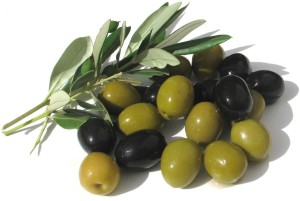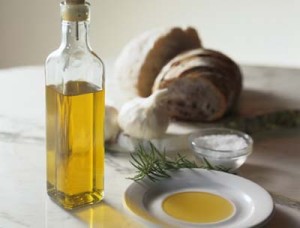Olives, the Western Hemisphere’s Most Versatile Fruit
Posted on November 11th, 2013 by Anna in Uncategorized | No Comments »
Greek mythology tells of the birth of the city of Athens. On its creation, both the god Poseidon and his niece, Athena, wanted to be patron of the city, so they proposed a contest: whoever could give the city a better gift would gain control of it. So Poseidon struck the ground with his trident, unloosing a spring of water for the townspeople, but the water was as salty as the ocean and not much use to them. Then Athena, the goddess of wisdom, gave the people of the city a small olive tree, explaining that this tree would provide them with fruit, oil, and wood. Athena won the contest; the city was forever after known as “Athens,” and the olive tree became sacred to the goddess.
Ever since ancient times, the olive has been a staple crop among Mediterranean societies, and Italy is no different. (In fact, virtually every language that has Latin influence derives its word for oil from its word for olive.) One of the world’s top producers of olives and olive products, Italy views the olive as a symbol of culture and fertility, and the time of the raccolta delle olive—the olive harvest—is marked with feasts and festivals. Lasting roughly from the middle of November to the beginning of the Advent calendar, the olive harvest represents for many the reaping of a year’s worth of hard work in preparation for the Christmas season.
While to the uninitiated, one type of olive may be largely the same as the next, the true connoisseur knows there are many varieties, such as the Tuscan moraiolo, of an intense flavor which produces an intense oil, or the leccino, which produces a mild, golden oil, or the frantoio, which produces green oil with a fruity flavor. After harvesting, olives destined to be eaten have to be cured with lye or brine, or packed in salt for a few months to remove the chemical present in fresh olives, oleuropein. They are often marinated to add flavor, and stuffed with a garnish such as feta cheese, pimientos, anchovies, almonds, garlic cloves—virtually anything you can imagine!
Contrary to what those of us whose only familiarity with olive oil is in a bottle on a supermarket shelf, the uses of olive oil go far beyond mere cookery. (Though, of course, you’d be hard-pressed—if you’ll pardon the pun—to find an Italian dish without it.) The ancient Roman gladiators used to rub themselves down with olive oil before fighting, to soothe and limber up tense muscles. In the Dark Ages the Catholic Church—the last vestiges of the organized hierarchical state of the Roman Empire—saw to it that olive cultivation didn’t fall by the wayside. The Church used it for sacraments, and for lighting oil lamps. Italian monks raised olive trees and used the oil to clear up rashes, headaches, stomachaches, and ear infections. To this day, olive oil is hailed for its health properties, especially in fighting cholesterol and reducing the risk of heart disease. Moreover, warm olive oil mixed with avocado can be used as an excellent hair mask, replenishing key nutrients such as Vitamin E to damaged and brittle hair.
Olive trees are such a widely useful plant that it’s no wonder civilizations have been cultivating them for thousands of years. (Contrary to the myth, first evidence of domesticated olive trees comes from areas around Syria and Palestine.) With the olive a rich symbol of peace and prosperity appearing commonly throughout western literature and history—Odysseus sat under an olive tree for shade; the dove returned to Noah’s ark with an olive branch in its beak; the Prophet Mohammed once referred to the olive tree as blessed—it’s no wonder that Italy is proud of its status as one of the leading olive producers in the world.






